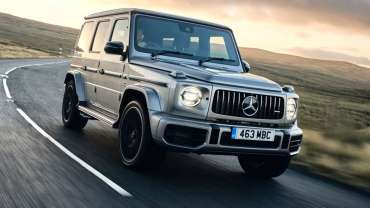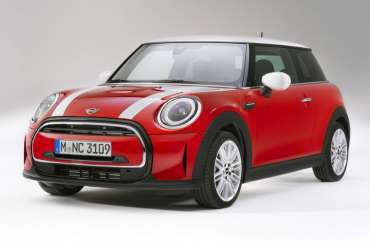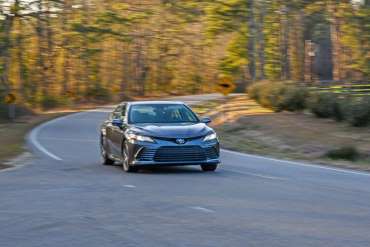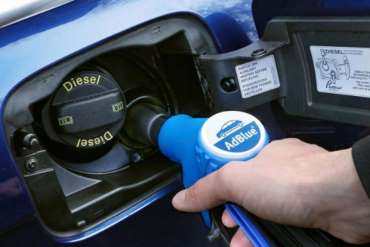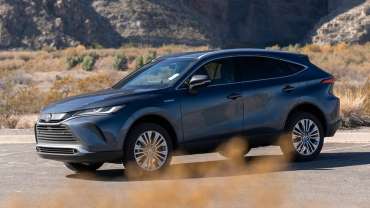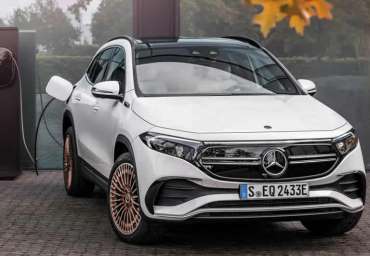
Worldcarblog.com
Mercedes-AMG G63 (2021) review: excess all areas
‘The old G-Class was a second or third car for most customers,’ Gunnar Guethenke (unsurprisingly nicknamed ‘Mr G’ as the head of Mercedes-Benz’s off-road division) told us back in 2018. ‘With the new model, we think it is a viable only car.’
That was a very big claim to make. Having tested one abroad and in the UK, though, we’re inclined to agree.
This G-Class represented the biggest shake-up in the model’s 40-odd-year history; the W463 model we all know and quietly admire had been on sale from 1990 until 2018. While there’s been little arguing about the streetside posing and rap-attack creds of the outgoing G, it drove, packaged and wobbled like a car knocking on the door of its 30th birthday party.
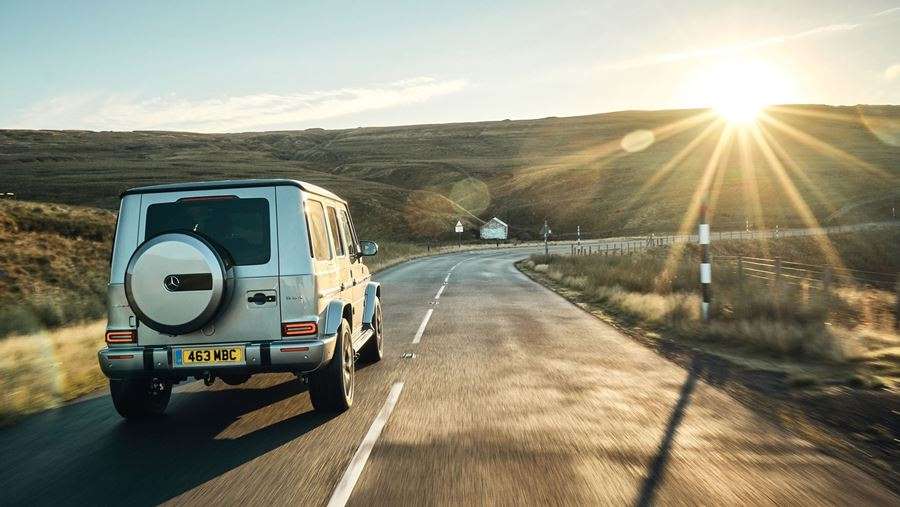
Here, we test the all-out AMG G63 variant.
What has changed with the latest G63?
Almost everything. Only three parts are carried over: the headlamp washers, the push-button door handles and the giant spare wheel cover bolted to the rear tailgate.
It’s still based around a sturdy (but new) ladder-frame chassis, built like steel girders to support a nearby suspension bridge more than a rich person’s plaything. Off it are hung steel and aluminium body panels, cleverly designed for maximum stiffness and a little less weight (mass falls by around 170kg, to a still-portly 2.5 tonnes).
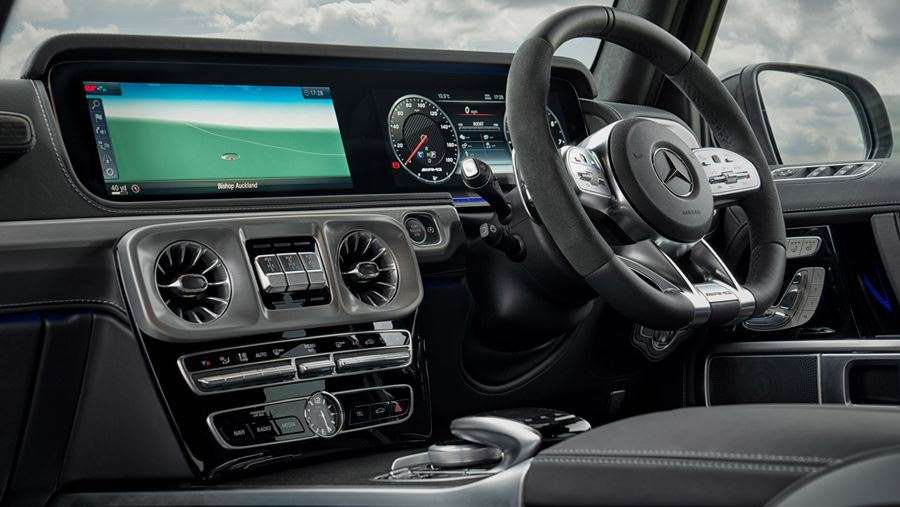
Much of that heft is attributed to the serious off-roading hardware; the new Mercedes-Benz G-Class range comes as standard with three fully locking differentials (one at each axle and a central clutch, to maintain traction in all conditions) and a low-speed transfer box. Daimler claims this provision is unique among off-roading brethren.
Climb aboard the new G and you won’t confuse old and new cabins. The old G-Class had a woefully cramped passenger compartment; your elbows felt pinched by the door cards, rear-seat passengers had nowhere to put their feet and the instruments and electrical architecture reflected the Betamax generation from which they hailed.
The new car is bigger, for starters: 53mm longer and 64mm wider, for superior packaging. It shows – even full-sized adults will be comfy in either row, and the rear bench can accommodate two, or even three, grown-ups thanks to thinner front seats and an impressively almost flat floor. The boot is an adequate 454 litres, pinched by the sub-woofer on the left and fuel tank on the right. Access it via the mother of all side-hinged, heavy tailgates which now locks into place at any extension so it won’t blow shut in a high wind.
Most striking of all is the E-class instrumentation that’s transformed the dashboard: giant twin 12.3in digital displays are standard in UK models (elsewhere you can order retro physical dials, should you fancy) and all the latest Merc trickery is present and correct. So you can now enjoy Apple CarPlay to sync your phone, skip around the menus using wheel-mounted thumb trackpads and there’s even a wifi hotspot. On a G-wagen!
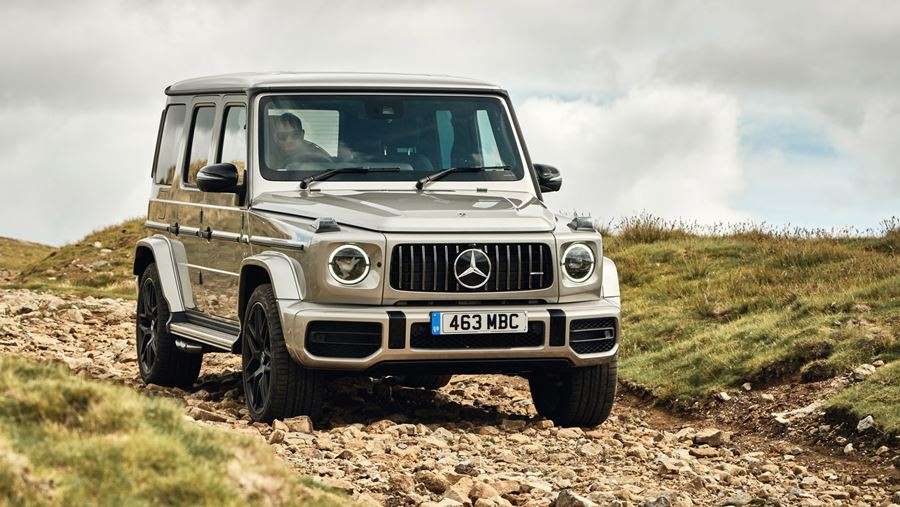
Oh, and there’s still a sturdy grab handle in front of the passenger, as a permanent reminder that this car is still all about scaling serious inclines more than the next playlist.
What’s the AMG G63 like to drive?
You quickly sense how thorough this overhaul is. The G might look incredibly similar from outside, all the way down to those faux rain gutters and sturdy exposed hinges that riff on the G aesthetic, but it’s essentially very modern.
This full-monty AMG G63 which brings the mother of all twin-turbo 4.0-litre V8s with a faintly ludicrous 569bhp and 627lb ft all the way from 2500-3500rpm. There’s also a G350d available in the UK, which we’ve ran as a long-termer.
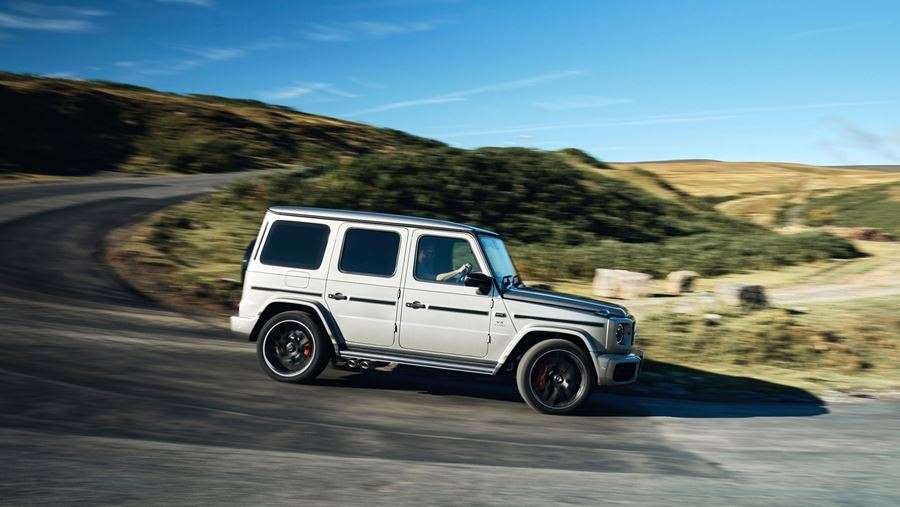
The AMG G63 So it’s neck-snappingly quick, with 0-62mph in a claimed 4.5sec and you can derestrict it up to 149mph if you’re feeling especially brave. Performance is accompanied by the rudest of V8 blare, exaggerated in Sport mode to bounce off walls and draw even more attention than the set-square boxy G-Class already musters.
The old one was fast, too, but felt like it was about to hurl you off the road at the first sign of a corner or bump. The new chassis delivers a quantum leap in ride and handling, soaking up the majority of road scars and – praise be! – delivering something approaching steering response and feel.
Thank the new electric rack and pinion steering, replacing the stick-in-porridge accuracy of the old recirculating ball set-up. Look: the new G-Class might be lighter but it’s still nearly 2.6 tonnes and you’ll never make that much metal truly agile, but the new G-Class has a damn good go at it. There’s still some hefty body roll – something you clearly have to expect from an enormous box that’s lifted several feet off the ground – but, again, it’s a marked improvement from the old one.
The chunky tyres (up to 22 inches in diameter, and down to 18s on Euro-spec models) give up the ghost first, squealing like a pig escaping the abbatoir, but body control and general poise are to be applauded. Driving the G-wagen is a lesson in upright boxiness, those perpendicular windows affording a fine view out – the bubble-wrap front indicators acting as a gun sight as you haul in the hot hatch hooligan up ahead.
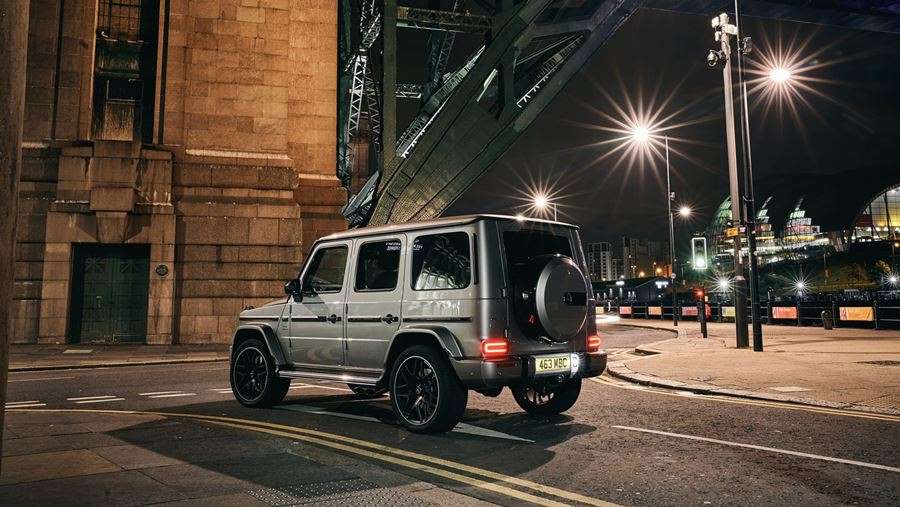
Will the new G-wagen off road like a Land Rover?
You bet. The G-Class has always been about genuine mud-plugging, as befits its ongoing military application among governments around the world. And the new one (still codenamed W463; it’s too iconic a badge to change, apparently) does more of the same.
Proper ground clearance (241mm), stubby ends for goat-like departure (30º), approach (31º) and breakover (26º) angles mean the new G-Class can scamper up the most extraordinary terrain.
The locking differentials help here, and you can adjust them on the fly at speeds of up to 30mph. You can feel each individual wheel grabbing at the ground and the low-speed transfer case means you can descend steep hills on tickover, as engine braking does its thing. It’s frankly incredible off-road – right up there with the best from Land Rover or Jeep.
Mercedes-AMG G63: verdict
There’s some truth to Guethenke’s claim that the new G is a jack-of-all-trades. It can be a viable only car – so long as you don’t mind the ostentation, the steep running costs and the image, which is part gangster-swagger, part military, part supercar slayer. It’s an extraordinarily versatile car and one gifted with that oft-forgotten automotive talent: character.
Source: carmagazine.co.uk
The hatch and convertible Mini have been restyled again
The current family of Mini models configured in the form of hatches and convertibles, from the F55 / F56 / F57 series, debuted back in 2013, only to undergo the first wrinkle tightening operation five years later. Then we got a chance to notice the British flag in the form of which the graphics of the last signal groups were made.
Although we would all think that after almost eight years, the time has come for a change of generations, that will not happen. That is why you should know that the new wave of modernization that swept the Mini brand, brought a lot of freshness to the offer, both in terms of the number and depth of improvements made.
Traditional Mini models got a new character with a large lid in the middle of a stylized air intake. The new bumpers have a flatter design, and are no longer "complemented" by fog lights, which are becoming just one of the separate functions of the main headlight groups, which now offer LEDs from the basic equipment package.
The last single groups incorporate the mentioned diodes in the same style as before, but the change is that they are part of the standard equipment package, while in the past such "feet" were paid extra. The rear center light, set to break the fog, remained in place, but is now successfully camouflaged by a transparent diffuser.
Other changes include new grilles on the front fenders, a newly developed collection of wheels with 17- or 18-inch wheels, as well as an enriched palette of available color shades for the body. However, the company is most proud of the two-tone roof and states that such an option is available for the first time in the history of the automotive industry. Of course, this refers to the vehicle that leaves the factory halls, and not to the secondary market.
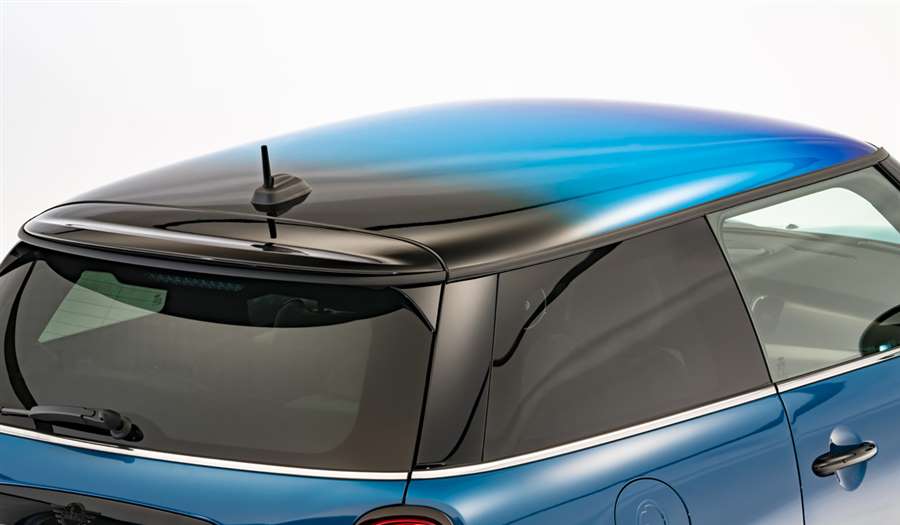
Several color combinations can be ordered in that spirit, and it is up to the buyer to express style and measure, although even the manufacturer will not allow him to show distaste, that is for sure.
There are a lot of novelties inside the little ones as well. There are different ventilation openings, steering wheel, and even a gear lever. Customers have a wider choice of combinations of available colors, materials and finishes.
An optional five-inch screen was offered instead of the instrumentation cluster even earlier, and now the graphics of the same have been improved. The infotainment system has also been redesigned, regardless of the fact that the dimensions of the monitor have remained identical, ie 8.8 inches. The new options bring a heated steering wheel as well as an electromechanical handbrake.
On this occasion, the "minis" were not left without diesel, but it happened in 2019, on the eve of the introduction of the environmental standard Euro-6d. That hasn't changed even now, so the range includes only petrol and electric models. The powertrains were not modernized during this restyling.
So, five petrol versions are offered in different countries, although only two internal combustion engines are in circulation. The turbocharged engine is offered in the following editions One First (75 hp), One (102 hp) and Cooper (136 hp), while the four-cylinder two-liter 2.0-liter is hidden on the market under the indexes: Cooper S (178 hp) and John Cooper Works . (231 hp).
The transmission can be a six-speed manual, a seven-speed automatic with a double clutch (for four versions), as well as an eight-speed automatic for the most desirable variant, the one that says John Cooper Works. The electric hatch Mini Cooper SE will continue to offer 184 horsepower and a traction battery with a capacity of 32.6 kW / h.
For Mini vehicles configured in the form of hatches or convertibles, it is planned to offer an adaptive suspension system where the shock absorber stroke is adjustable and variable. Previously, this option was "under the nose" of only buyers of the hot hatch Mini John Cooper Works. Through this restyling, a more modern adaptive cruise control has been installed, so he can now restart the vehicle after the driver has previously stopped.
Sales of the updated Mini in Europe start in March. It is best to inquire at an authorized dealer about the prices of newcomers. They are especially looking forward to every customer, which is also true for the BMW parent brand, with the bigger brother selling much better.
AutoRepublika
2021 Toyota Camry Goes All-Wheel Drive (Again)
Introduced halfway through the 2020 model year, the Toyota Camry's all-wheel-drive option makes a return after a 29-year hiatus.
The late 1980s were a halcyon era for all-wheel-drive cars. Mitsubishi made all-wheel-drive Galants, Honda had the Civic Real Time 4WD, Pontiac introduced the 6000 STE AWD, and Ford offered an all-wheel-drive Tempo. The period gave us various AWD Subarus and Audis, the BMW 325xi, and Mercedes-Benz's 4Matic system. Toyota even built an all-wheel-drive Camry, the All-Trac, from 1988 to 1991. Then the SUV craze took off, everyone bought a Ford Explorer, and all-wheel-drive cars went back to being freaky things for rally-racing fans and rich Vermonters.
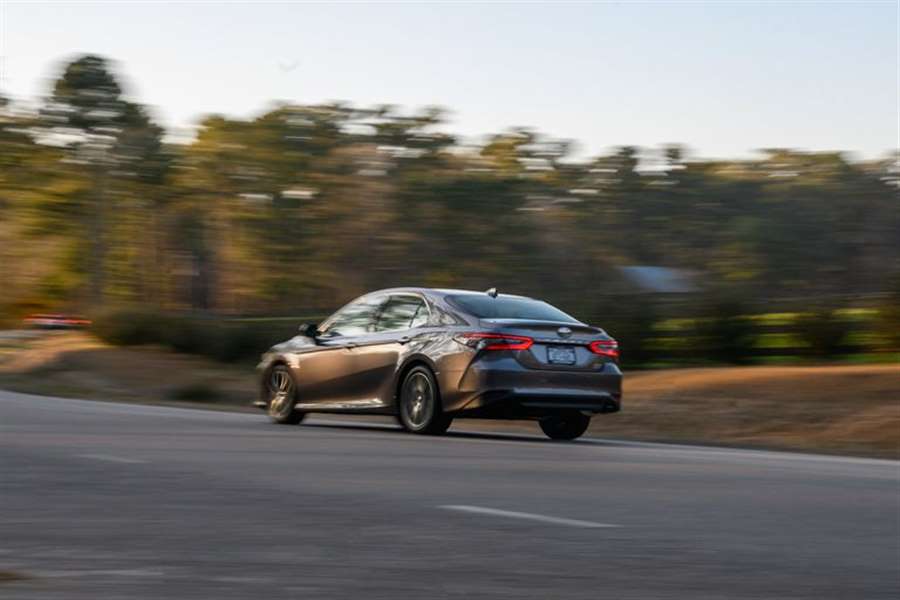
Okay, we're oversimplifying. But if SUVs and crossovers killed the mainstream all-wheel-drive sedan, we can also argue that they're the proximate cause of its current minor renaissance, since carmakers want to give their sedans a fighting chance in showrooms bursting with new utility vehicles. So, Toyota's AWD Camry has returned, this time less because of direct all-wheel-drive competition (Subaru Legacy, Nissan Altima) than to fight the more general adversary known as "all crossovers."
Toyota introduced all-wheel drive as a midyear addition to the 2020 Camry lineup, and it went into production at the company's factory in Kentucky last March. Considering what else was ramping up last March, you'll be forgiven for missing that news. Toyota figures 15 percent of Camry buyers will choose the all-wheel-drive option—which is limited to the North American market—but we predict that only a tiny subset of those will add their own All-Trac badges. That's too bad. As it stands, a subtle AWD emblem on the trunk is the only giveaway that your Camry is packing more than one differential.
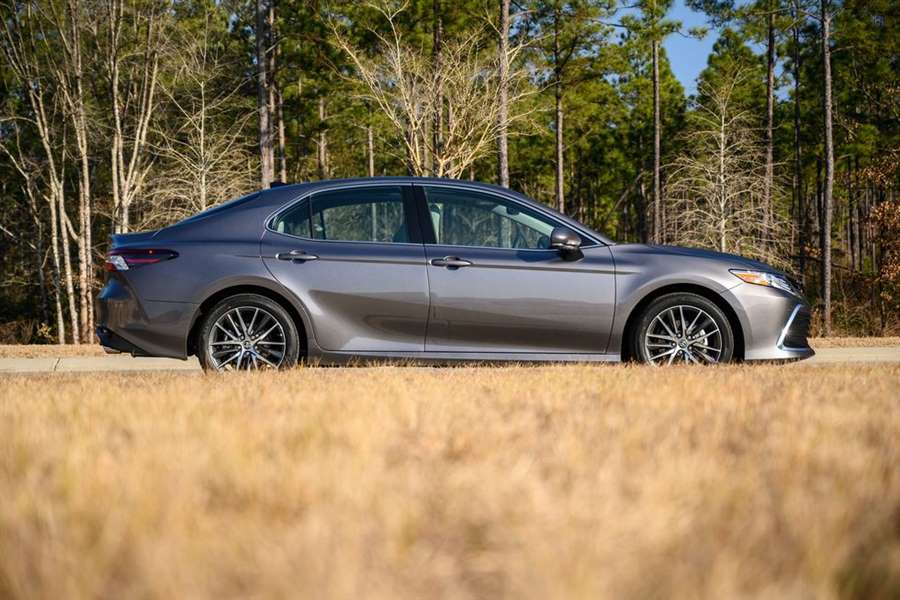
Unless, that is, you jack up the car, which we did to take a peek at that rear diff. The complete system adds roughly a claimed 165 pounds yet makes no impingement on trunk space. The rear seats lose 0.4 inch of headroom, and overall passenger volume declines by less than a cubic foot, both of which are metrics that fall under the heading of "not so you'd notice." Oddly, all-wheel-drive Camrys have a wider turning circle (39.3 feet versus 38.0 for front-drivers) because of a slightly wider rear track and different suspension geometry.
The rear-axle hardware also crowds the exhaust system a bit, resulting in the all-wheel-drive models making one horsepower fewer than their front-drive siblings. We suspect that, in a drag race, the weight penalty will make a bigger difference than the single-pony deficit.
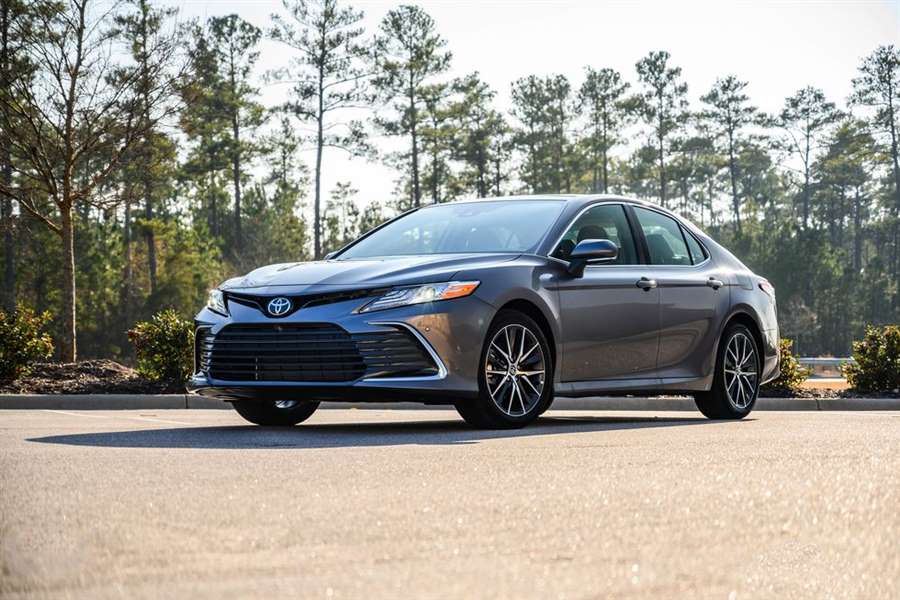
Indeed, the Camry's AWD option is available on every four-cylinder trim level, including the sportier XSE. It's not available with the optional V-6 or hybrid powertrains, presumably because if that's what you're after, Toyota would rather sell you a RAV4 or a Highlander. The naturally aspirated 2.5-liter four is reasonably powerful—202 horsepower in most trims, 205 in the XSE, which has dual exhaust outlets—if rather coarse at high rpm. At least it's hooked to an eight-speed automatic transmission, as opposed to the continuously variable transmissions found in the Camry's competitors from Nissan and Subaru. Decisive upshifts and quick downshifts add some satisfaction to the AWD Camry driving experience, although the word "fun" doesn't quite apply. A TRD hot rod this is not.
In fact, in normal operation, the all-wheel-drive Camry behaves like a front-drive model with some junk under the trunk, disengaging the rear axle via an electromagnetic coupling. When the front wheels slip (or when accelerating from a stop) the rear end shows up for work, deploying a maximum of 50 percent of the engine's available torque to the back. We didn't get a chance to test the system in snow, but on dirt the Camry hooked up and launched after a momentary hint of wheelspin from the front. Traction overrules horsepower, quickly and decisively, which is the point. This wouldn't be a great car for spinning donuts in an empty parking lot, but it should excel on sloppy winter roads.
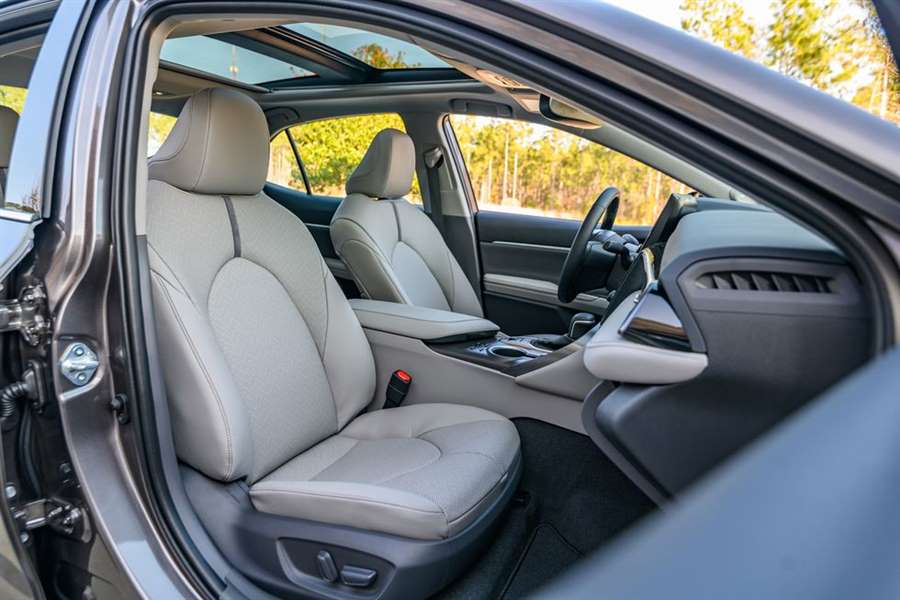
And it's a good buy. At $1400, the all-wheel-drive option doesn't cost much more than a nice set of mounted winter tires. It does exact an ongoing penalty in running costs, though, since the added weight and drag of the system drops the Camry's EPA combined estimate by 3 mpg versus comparable front-wheel-drive models. For the XLE example we drove, the EPA highway rating fell from 38 to 34 mpg, despite the Camry's ability to disconnect its rear axle. Given that Toyota stole some packaging space for the all-wheel-drive system by fitting a smaller fuel tank (14.4 gallons, down from 15.8), the Camry AWD will be visiting gas stations considerably more frequently than its front-drive counterpart.
Taken together, this amounts to a bunch of small drawbacks that you'd forget all about the moment you power up a steep hill in six inches of powder. If that's something you ever need to do in a family sedan, maybe take some inspiration from the all-weather cars of the '80s. You can't buy a new Pontiac 6000 STE, but the all-wheel-drive Toyota Camry is back.
Source: caranddriver.com
Without this solution, there is no future for diesels. Good to know what AdBlue is for?
AdBlue is a 32.5 percent aqueous solution of urea that is neither toxic nor flammable, but is highly corrosive.
This product is also known as AUS 32, which is an abbreviation of the English name for aqueous urea solution. It was developed especially for diesel engines, whose exhaust systems are equipped with selective catalytic reduction (SCR system).
AdBlue is injected into the exhaust gases in the catalytic converter of the diesel engine to reduce harmful emissions of nitrogen oxides (NOx). In this way, the emission standards for Euro 4, Euro 5 and Euro 6 can be met. By injecting the AdBlue solution into the exhaust gases, the urea contained in the ammonia (NH3) and carbon dioxide (CO2) solution is obtained.
The whole process takes place at high temperatures, at which ammonia reacts with nitrogen oxides, which are formed during the combustion of diesel. The product of this reaction is harmless nitrogen (N2) and water vapor (H2O), which come out of the exhaust. This process is called selective catalytic reduction (SCR). AdBlue is liquid up to a temperature of -11.5 degrees and can be reused without restriction if it is dissolved continuously. It is very corrosive, and must not come into contact with non-ferrous metals, various types of plastic and similar materials.
The dosing of AdBlue additive, which is stored in a separate tank, is done completely automatically in the vehicle, in accordance with the control unit. In the case of Euro 4, the amount of added AdBlue additive corresponds to about 3-4 percent of the amount of fuel consumed, while in Euro 5 it is between 5 and 7 percent.
In certain cases, AdBlue can reduce diesel consumption by up to 7 percent, which partially justifies the initial costs of mounting on a vehicle in accordance with the Euro 4 and Euro 5 norm. By comparison, about 35 new vehicles with AdBlue emit the same amount of particles as a ten-year-old vehicle without a SCR system.
Many modern diesels use AdBlue solution, which is poured into a special tank and must not be mixed with fuel. When it is used up, a new amount should be added. Although it will work without AdBlue, the engine will emit larger amounts of harmful gases, and the built-in diagnostic system (OBD)
How Comfortable Is the 2021 Toyota Venza? We Road-Tripped for 4,000+ Miles
From Los Angeles to Houston and back.
I wrapped up 2020 the same way I started it, with a cross-country trip from Los Angeles to Houston. Last year I drove our long-term Volvo S60 to visit my family during the holidays and had such a great time that I decided to repeat it (and who knows, maybe it will become a tradition). This time, my chariot was our 2021 Toyota Venza—the hybrid-only SUV that serves as an alternative in Toyota's SUV lineup to the off-road-looking RAV4. I've chaperoned the Venza since October, but this was the first time I took it on a long road trip, and overall it excelled at its job. Instead of opting for the direct route, I went via the scenic way.
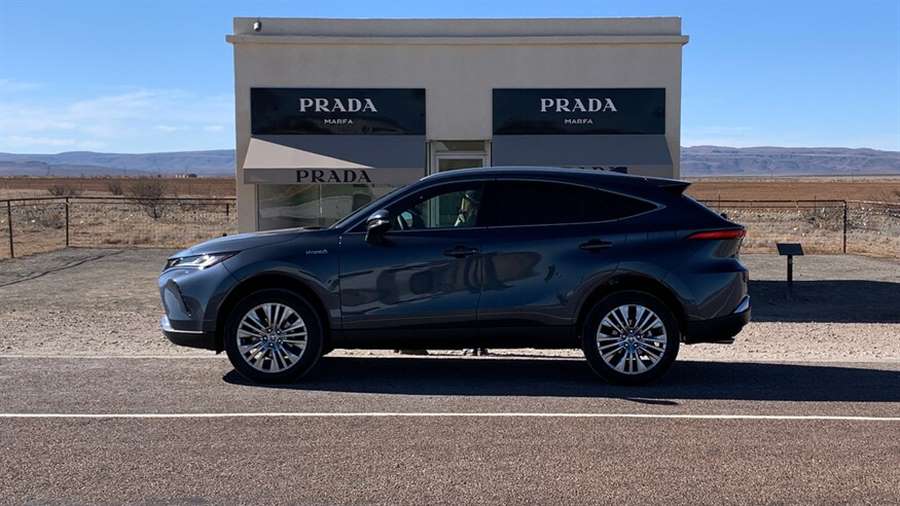
My road trip started before 5 a.m. when I left Playa del Rey and headed south to San Diego, where I then took I-8 to Tucson. Instead of taking the direct and boring way on the I-10, I opted for the more scenic route, driving through the Cuyamaca Mountains, the Imperial Sand Dunes and along the All-American Canal before ending on the I-10 between Phoenix and Tucson. After a quick lunch stop in Tucson, I continued onto El Paso, Texas, where I spent the first night. In total, I traversed 853 miles and averaged 33.5 mpg, according to the Venza's computer.
After 11 hours of driving, I found the seats very comfortable, providing great back and thigh support. The optional SofTex package—which includes leatherette seats, heated, ventilated, and powered front seats, and heated steering wheel—felt worth it. Crossing the desert in the winter means cold and hot temperatures throughout the day, so I used both the heating and ventilation often.
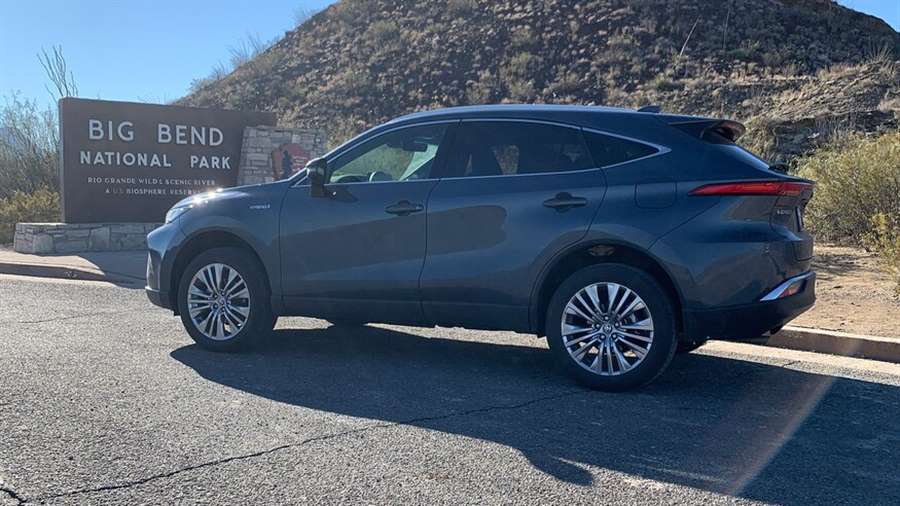
On day two I stopped in in Marfa, Texas, a town in the middle of the Chihuahuan Desert with chic shops and art galleries that will make you think you're on Abbott Kinney Blvd in Venice, California, or somewhere in Brooklyn. During a quick stop in the town of Valentine I visited the famous Prada sculpture that artists Elmgreen and Dragset permanently installed in the middle of the desert—a taste of what Marfa is really all about.
Highway 90 connects the desert cities of Marfa, Alpine, and Marathon in West Texas, and continues along the Rio Grande bordering Mexico. The drive is way more entertaining than I-10, with hills, river crossings, and swoopy corners at times. Border Patrol agents are seen almost every 15 minutes, and with a speed limit of 75 mph, this two-lane highway is captivating to drive. The Venza produces a good amount of tire noise, and the cabin was loud when we drove over harsh pavement, but the ride was always settled. With the 2.5-liter l-4 engine and three electric motors mated to a CVT, the Venza feels adequately powered, but it lacks the punchiness of turbo-four engines or thirsty V-6s of other SUVs in the segment.
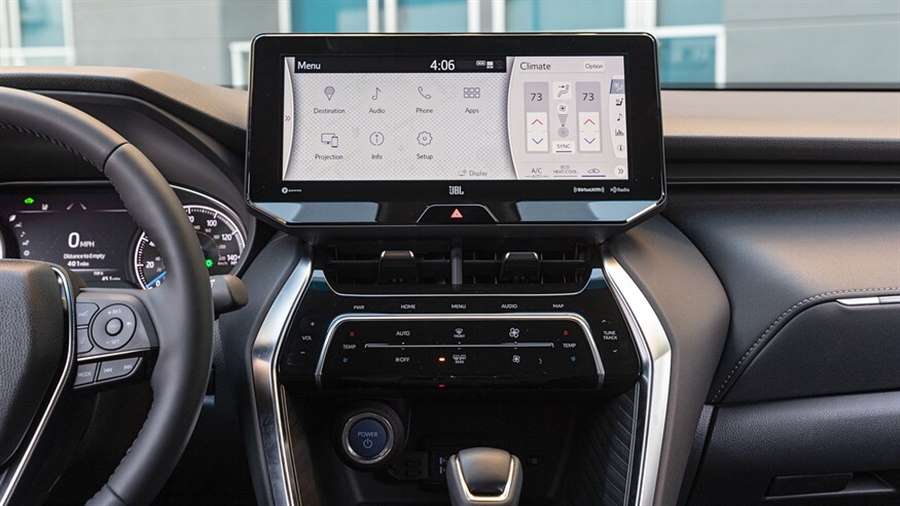
After a night stop in Del Rio, Texas, I headed north to the quaint town of Fredericksburg. Known for its wineries and German heritage, there's a cozy feeling walking on its sidewalks and seeing the historic Vereins-Kirche building. Nestled in the heart of the Texas Hill Country, Fredericksburg is home to many great roads and vistas. There's no doubt that central Texas was blessed with a fantastic landscape.
I arrived to Houston after driving 1,726 miles over three days, averaging 34.2 mpg. I confess I was getting tired toward the end of the road trip, but visiting all of these great places gave me a taste of Texas that I had not savored before despite having lived eight years in the Lone Star state.
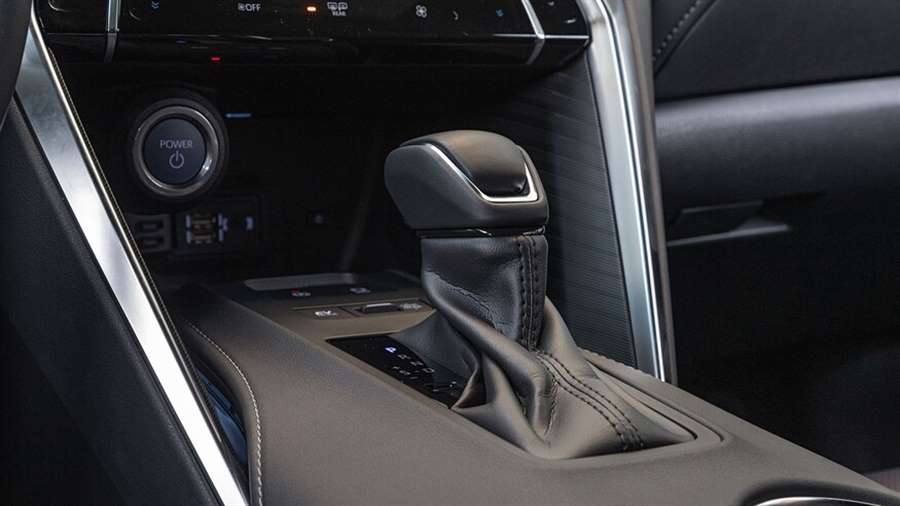
With my brother tagging along on the way back, the drive was more enjoyable. Our first stop was Big Bend National Park, but before we got to our hotel in Alpine, a massive winter storm dropped over 24 inches of snow in some parts of the state, making the roads icy and dangerous. On our drive to Alpine, we saw ice and snow on the road, but we made it to the hotel without any issues. Thankfully, the Venza comes with standard all-wheel drive, which was very useful during this part of the trip.
Big Bend National Park provides some of the most stunning vistas I've seen in my life. The Santa Elena Canyon's enormous walls are split by the Rio Grande, creating a natural division between Mexico and the U.S. Because the park also got a lot of snow, the basin, which is home to many trails, campgrounds, and a lodge, was closed. So we headed west to Big Bend Ranch State Park, taking FM 170, which follows the Rio Grande. With cliffs and hills on both sides of the border, the views were breathtaking, and the twisty turns made this road quite fun. I was most impressed with the landscape in this part of Texas—it seems like a well-kept secret compared to other places in the country. Note to self: Come back with a truck and off-road equipment; there's plenty of trails to experience.
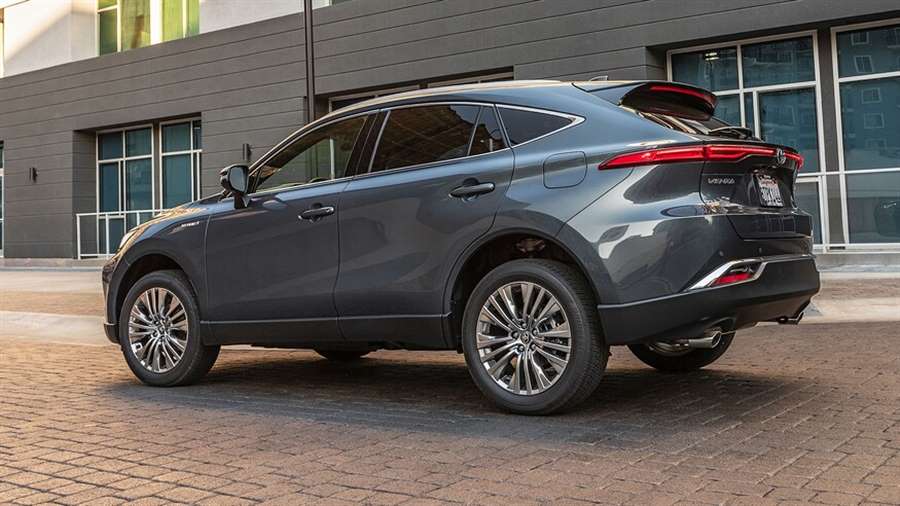
The next day we left Alpine for Tucson. We stopped at El Paso for lunch and noticed how close Ciudad Juarez really is from its northern sister city, as we got a panoramic view of it driving on I-10.
Sitting in the front passenger seat, my brother had quite a bit of trouble with the capacitive touch buttons on the center console. He'd confuse the temperature controls for the radio tuning controls and often hit the wrong button given that they are very touch-sensitive. One of the Venza's weakest points is interior space. Despite being positioned between the RAV4 and the Highlander, it has less space than even its smaller sibling. That was especially notable on the return trip when we were carrying two large suitcases, a bag of golf clubs, and a couple of biggish boxes. Even with the rear seats folded, cargo space is limited.
After a mostly boring drive, dozens of songs, and a couple of podcasts, we were happy to stop in Arizona for the night.
An early wake-up call had us on the road by 7:30, and we continued our way west on I-8. After our visit to White Sands National Park last year, we decided to visit the Imperial Sand Dunes in California for a Sahara-like experience. Although it's not nearly as impressive as the African desert, the scenery is beautiful, and it served as our last stop before we ended our trip.
With 4,020 miles added to the odometer, the Venza proved itself to be a comfortable and efficient SUV. At 33.2 mpg on average, that's a bit under the EPA's ratings, but weather and high speed limits are to blame. There will be more road trips with the Venza, and this one was a great start.
Photos of the road trip are courtesy of Andrés Cortina.
Source: motortrend.com
Manhart BMW X5 M with 823HP
German Manhart now offers the owners of the BMW X5 M Competition a new tuning program.
Manhart’s package to modify the BMW X5 M Competition primarily implies that the 4.4-liter V8 TwinPower Turbo engine is boosted from 625hp and 750 Nm to 823hp and 1080 Nm of torque.
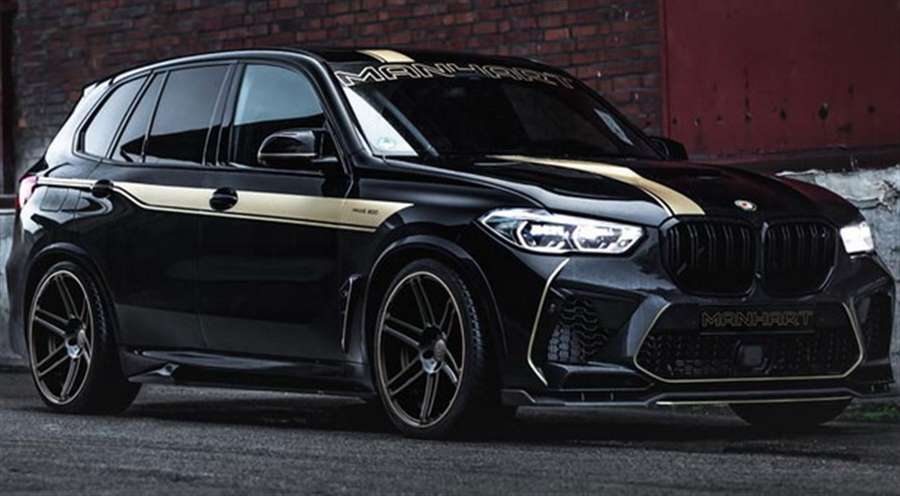
The Manhart package also includes carbon fiber elements, a stainless steel sports exhaust system, a set of new 22-inch wheels, stronger brakes, modified suspension (the car is 30 mm lower), as well as gold details, Manhart emblems and a refined interior. alcantara, carbon fiber elements).
Manhart does not state data on acceleration to 100 km / h, so here is a reminder that the serial X5 M Competiton needs 3.8 seconds for that.
The same package will be offered for the BMW X6 M Comeptition.
Mercedes-Benz EQA review
Mercedes-Benz's latest EV is smoothly predictable
The latest new addition to Mercedes-Benz's growing line-up of electric cars is the EQA, the EV version of the existing GLA SUV. Although it looks like the aformentioned family car with a blanked-out nose, there's a lot of new technology under the skin, which will be shared with future models in the firm's EQ model range.
It's exactly the sort of product that the carmakers are telling us that buyers want right now – an electric SUV. And they're all rushing to build them for us, with the EQA's rivals including the upcoming BMW iX3, Ford Mustang Mach-E and Audi Q3 e-tron as well as the Volvo XC40 Recharge, which is already on sale in the UK.
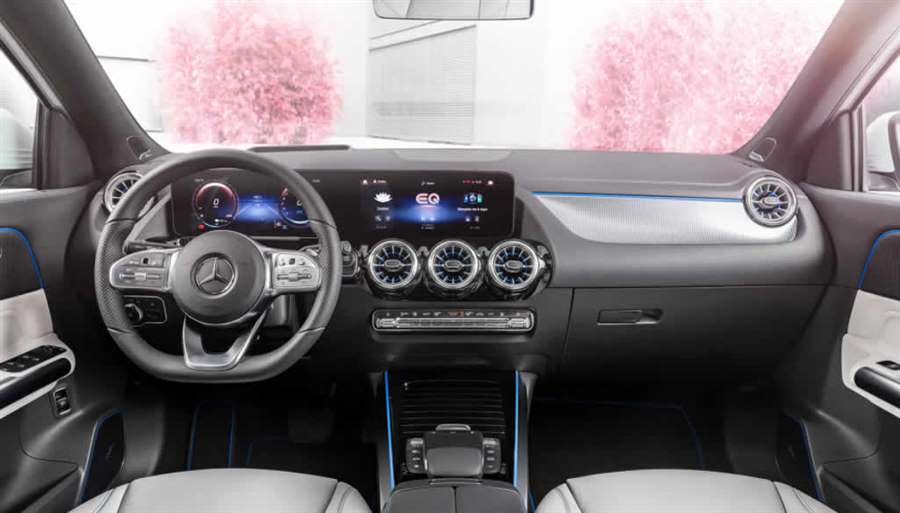
Design wise, it’s what you’ve come to expect from a small Mercedes-Benz SUV – smooth, creaseless design outside and an MBUX-equipped dashboard and infotainment system on the inside.
What's it like inside?
So it looks familiar inside, but there are some interesting touches, such as the instrument lighting which turns momentarily white when boost is active and the horizontally split performance meter which replaces the rev counter. There's also a fire red low-range warning scenario for the screen and the four driving modes are named Modern Classic, Sport, Progressive and Reduced.
The EQA can be had with the Energizing Comfort Plus package first launched in the CLS, which sounds like the answer to a question no one asked, but actually enhances comfort on long drives by offering massage functions, smartwatch connectivity, mood lighting, bespoke music and even a power nap feature you can use when parked up.
UK specs are yet to be confirmed, but trim levels in Europe include AMG Line, an Electric Art version with low-drag aerodynamic wheel covers and the launch Edition 1 featuring rose gold accents inside and out.
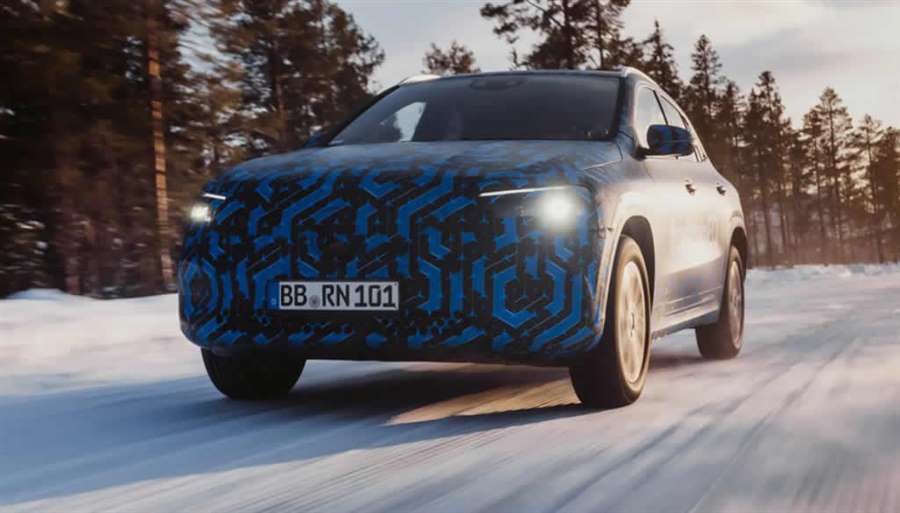
What's under the skin?
The good news is that there's some genuinely innovative technology under the skin and the claimed battery range and performance are impressive. A substantial lithium-ion battery pack is fixed into the floor, with the first model – EQA 250 – having a usable battery capacity of 66.5kWh. That lags behind the 78kWh you get in a Volvo XC40 Recharge, but is on the money for an EV of this size and class.
It's calibrated for range and efficiency rather than performance. The EQA 250 model claims up to 266 miles of range, according to WLTP figures, has a 0-62mph time of 8.9 seconds and a maximum speed of 99mph. You can charge it up to 11kW on AC at home, or up to 100kW on DC rapid charge.
There will be more EQAs to choose from, with Mercedes-Benz confirming that the EQA 250 model will be fjoined by power variants, including those with all-wheel drive. There will also be a 200kW (272hp) version later on (most likely badged EQA 300), and another variant that can claim up to 310 miles.
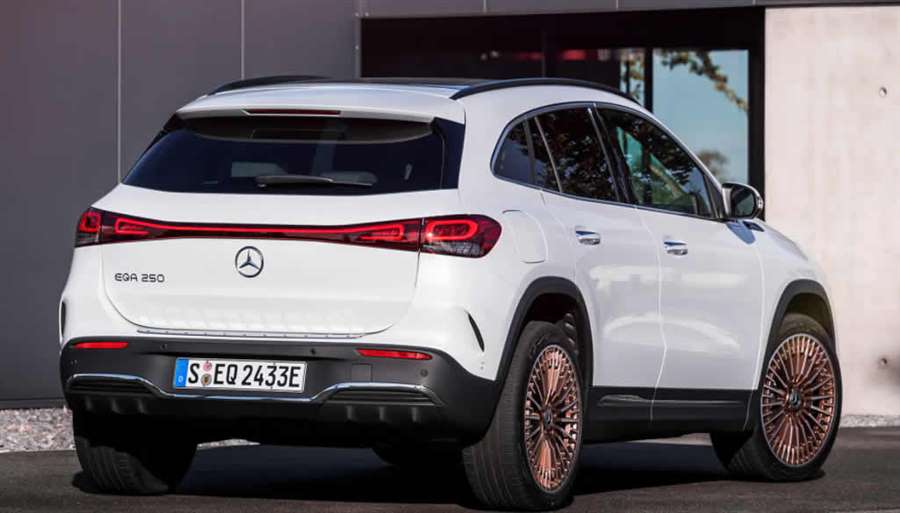
The EQA also gains the EQC's Eco Assist system, which uses navigation and traffic sign data to gauge how much brake regeneration is required at a given moment, and the navigation also takes into account charging times to give you as accurate a time as possible to get to your destination.
What's it like to drive?
We've had a quick drive of a pre-production EQA in prototype form, and can confirm that it's an impressively refined place in which to spend time. The main audio source up to 20mph is the pedestrian warning chime which, later turns into a subdued hum. Only when driving really hard does that murmur swells to a discreet growl.
Despite the modest claimed acceleration figures, keen drivers will enjoy way the EQA can cover ground with surprising vigour. And like all EVs, this seamless acceleration is uninterrupted by gearchange upshifts. The almost noiseless flow means you have little sensation of speed, which might be worth noting if you're not someone who watches the speedo like a hawk. Overall, it’s a refined machine, complete with a comfortable and cosseting ride.
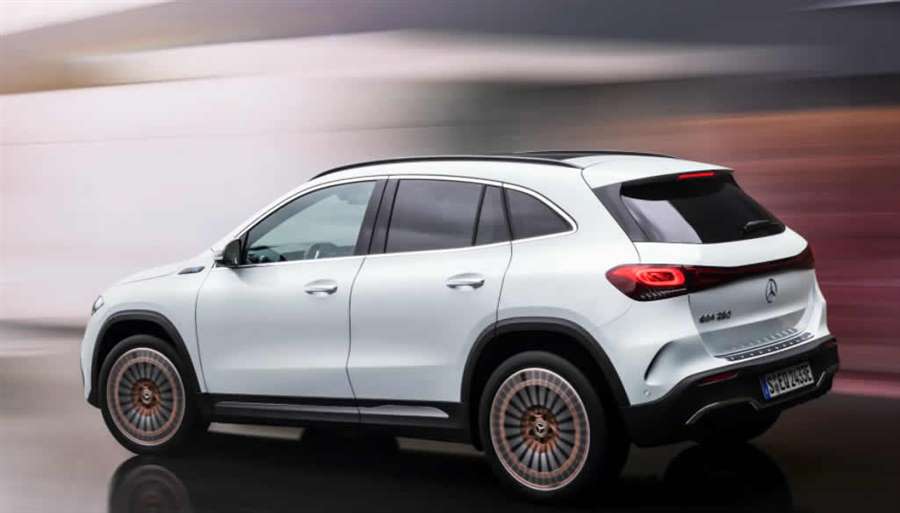
There are three recuperation modes (how much energy is recovered when lifting off the throttle) with different levels of energy regeneration labelled mild, medium and strong. Strong in particular feels like a viable one-pedal driving experience – lift-off and the car quickly loses momentum.
When will it go on sale in the UK?
Expect to see the EQA go on sale in the summer of 2021, with UK prices and specs yet to be confirmed. German prices start at €47,540, which suggest it'll be much more affordable than the XC40 Recharge and BMW iX3. There will be more related models to follow, with the EQB seven-seater SUV and EQS luxury saloon following later in 2021.
Source: parkers.co.uk

